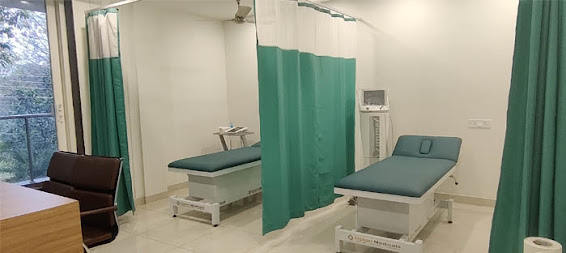What is Stroke Rehabilitation?
Stroke rehabilitation in
Gurgaon helps
you regain as much freedom and quality of life as possible. Rehabilitation
after a stroke can help you physically, emotionally, socially, and spiritually.
It enables you to restore optimal health, function, and well-being.
Rehabilitation comes from the Latin "habilitas," meaning "to
re-enable."
Which places offer stroke rehabilitation?
The type of facility you
recover depends on the kind of problem you are having and your insurance cover.
Your doctor and clinical social worker can help you decide which setting works
best for you.
Some physiotherapy clinic in Gurgaon and dispensaries have rehabilitation
units. Other units are in separate facilities that are not part of the hospital
or clinic. If you are being treated in an inpatient unit, you may need to stay
in the facility for several weeks. If you receive outpatient services, you will
be rehabilitated for a specified period each day.
Skilled Nursing Home
Some nursing homes offer
special strokerehabilitation in Gurgaon programs. Others offer physical, professional, and other
types of therapy that can help you recover. These therapy programs are usually
not as intense as those provided in hospital rehabilitation units.
Your house
Specialists can come to
your home to help you heal. While this is more comfortable and convenient than
rehabilitating your outdoors, there are limitations to this option. You may not
be able to do the exercises that need special equipment, and your insurance
company may not take care of this.
· With the severity of your stroke in terms of physical factors, both cognitive and physical effects.
· Emotional factors, such as your motivation and mood and your ability to stick to rehabilitation activities outside of therapy sessions.
· Support from friends and family are examples of social factors.
· Therapeutic factors, including the early onset of your rehabilitation and the skills of your stroke rehabilitation team.
The recovery rate is
usually highest in the weeks and months after a stroke. But, there is evidence
that performance may improve 12 to 18 months after a stroke.
Within 48 hours after the stroke, rehabilitation therapy usually begins in the intensive care unit once the condition has stabilized. The first step usually involves launching an independent movement to overcome paralysis or weakness. A therapist will assist in auxiliary or self-performing movement exercises to strengthen stroke-weak limbs and increase mobility.
A person with a stroke may
need to learn how to sit and move between a bed and a chair to stand and walk
with or without help. Gaining the ability to carry out essential daily life
activities, such as bathing, dressing, and using the toilet, represents the
first stage of returning to independence.







